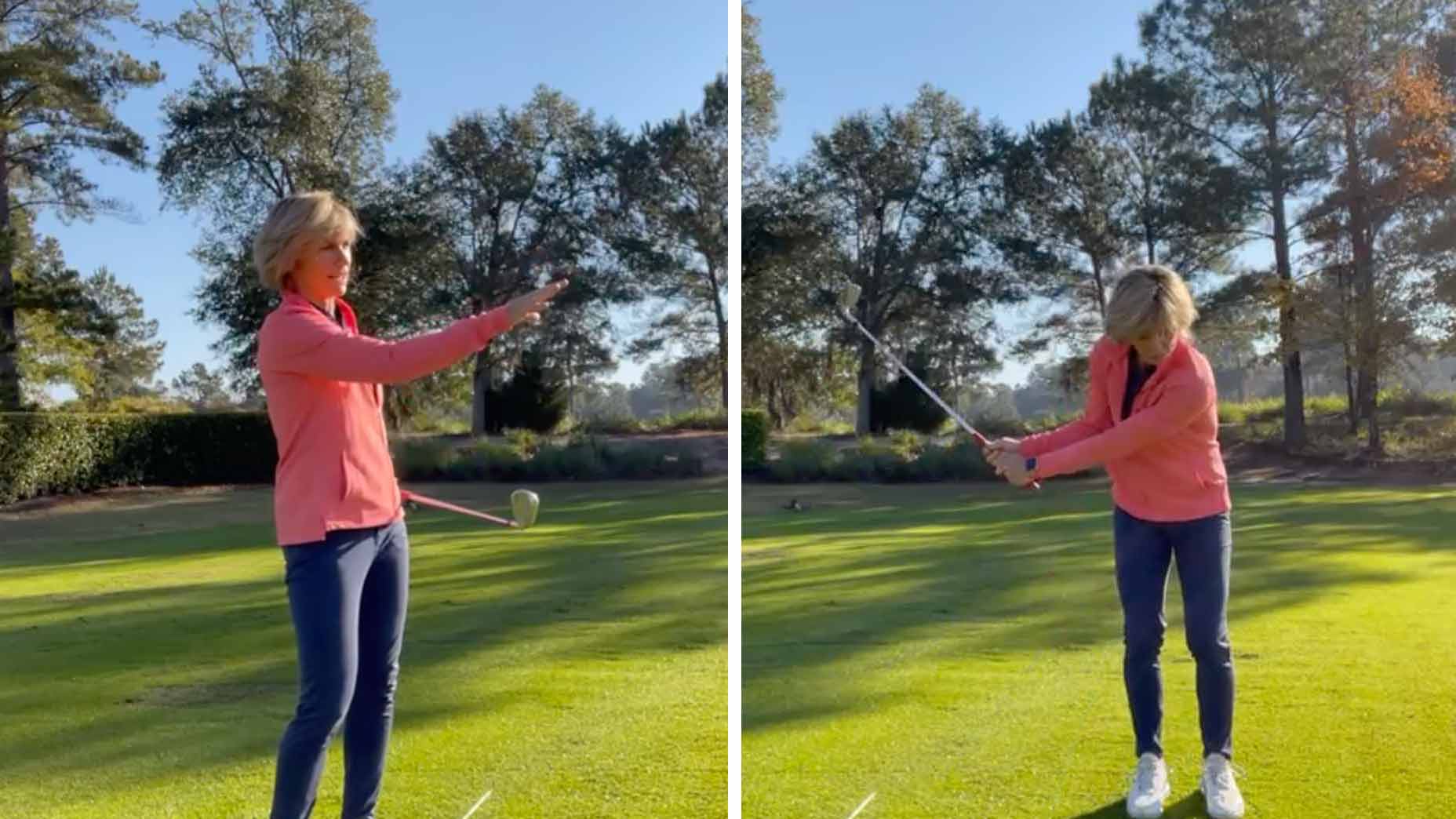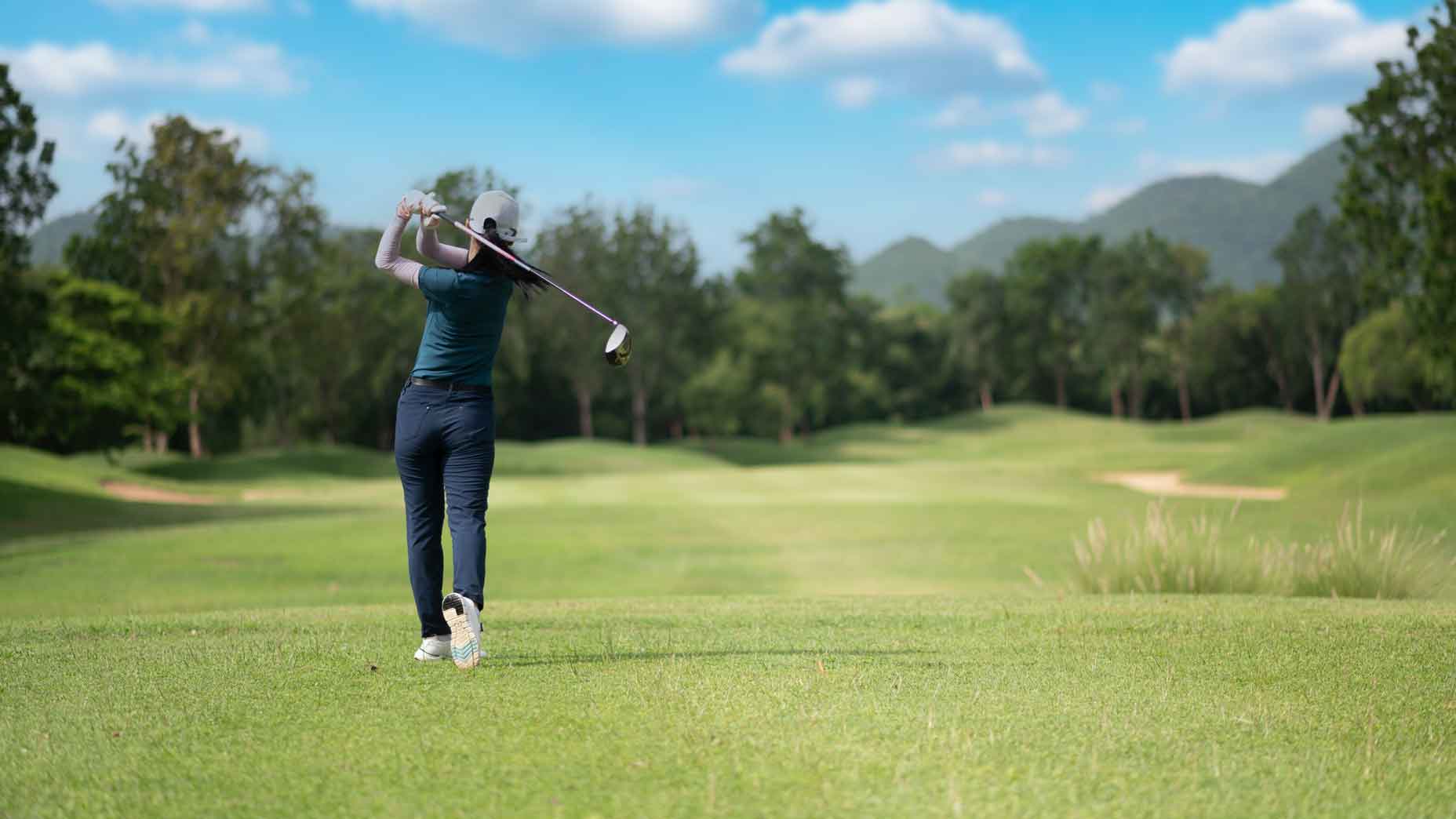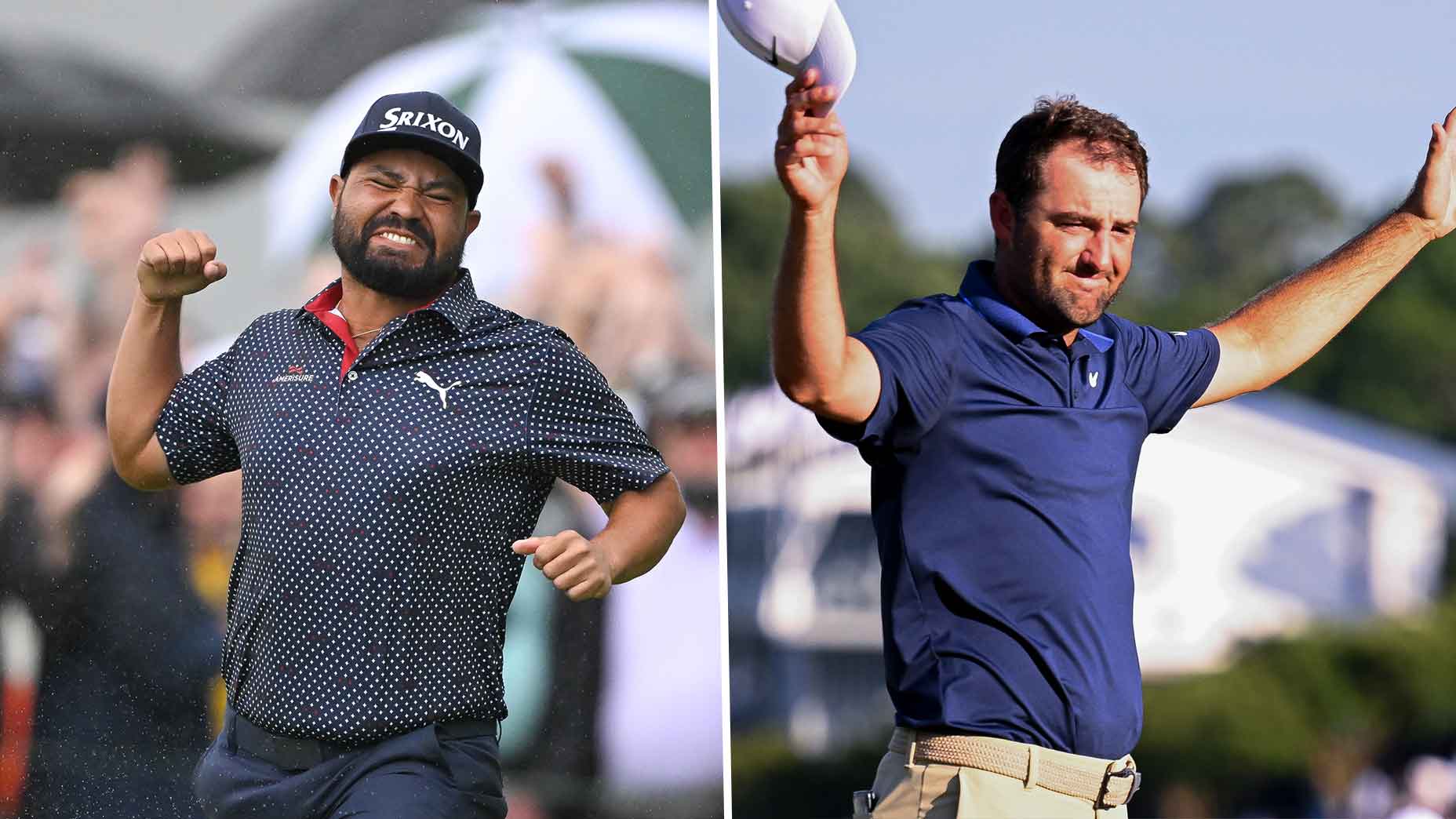During pro golf tournaments, one of my favorite places to spend time is the practice range — and last week’s Masters was no exception.
Many golfers probably wonder what’s going on in the time before the big boys tee off. Add in the extra pressure of it being a major, and there’s always excitement in the air.
But one thing that even surprised me while standing on the practice tee was this: Seeing Scottie Scheffler pull out an iron with a molded grip. Yes, the grip that has the exact location of where to place your hands, which is often a training aid you might see a beginner use.
Of course, Scheffler is definitely not a beginner.
So why did he have it? What was he doing using it if he already knows how to grip a club? And if he’s doing it as a previous Masters champion, should you be doing it too?
How a molded grip can be useful — for all levels of golfers
Let me unpack a few things, starting with a motor learning perspective that we can all benefit from.
When we learn a new motor skill, training aids that force us into a particular movement can be useful. Sure, you didn’t know how your hands were supposed to feel when learning a grip, but you do with a molded grip.
But later in learning, you don’t need to have such explicit feedback. Once you already know the movement, or in this case grip hand placement, a training aid like the molded grip is less instructive and more for reassurance.
However, when you add pressure — for instance, competing in a major tournament like Scheffler did at the Masters — something different and interesting happens. You know that you’re about to play in something big, or for money, and it counts. Our nervous system stress response system kicks in, and one of two things happens: We either under-focus or over-focus.
Women’s golf tips: How to avoid overthinking and play each shot with confidenceBy: Krista Dunton, Top 100 Teacher
In golf, the more common direction is to over-focus, and, in particular focus on technique.
We quickly go back to the intricacies of the movement we are looking for, making sure that we get it right with the real swing. The practice swing is a load of check listing (get the club outside the hands, then flatten the lead wrist, pause at the top, then engage the abs, and so on).
This kind of explicit thinking is normal and helpful when you’re learning something that’s not quite “automatic.” As you practice it and play with it, the pattering eventually moves into a more procedural part of your brain, allowing you go through the motions and not thinking as much.
But under pressure, we often over-focus, thinking about the details of the swing to make sure it works.
That’s where a molded grip, an alignment rod stuck in the ground, or a towel under the armpits can come in handy. It provides quick confirmation that our swing is in place, and that we don’t have to think about it. It’s a way of reassuring that voice in our head that says, “is this swing going to work today? Am I doing what I should be doing?”
Anyone that is playing in a professional tournament has proven to the world that they have the skills for any shot needed. The question is, can the player do it under pressure? Scheffler certainly can, but, even for him, using a training aid can give a quick hit of confidence, reminding him that his technique is on point.











